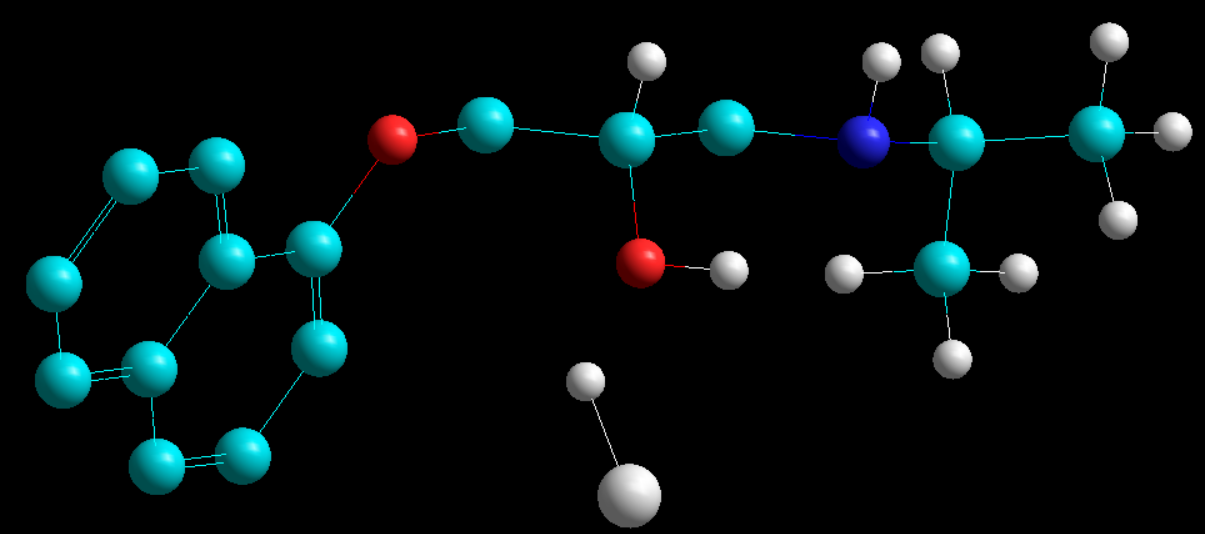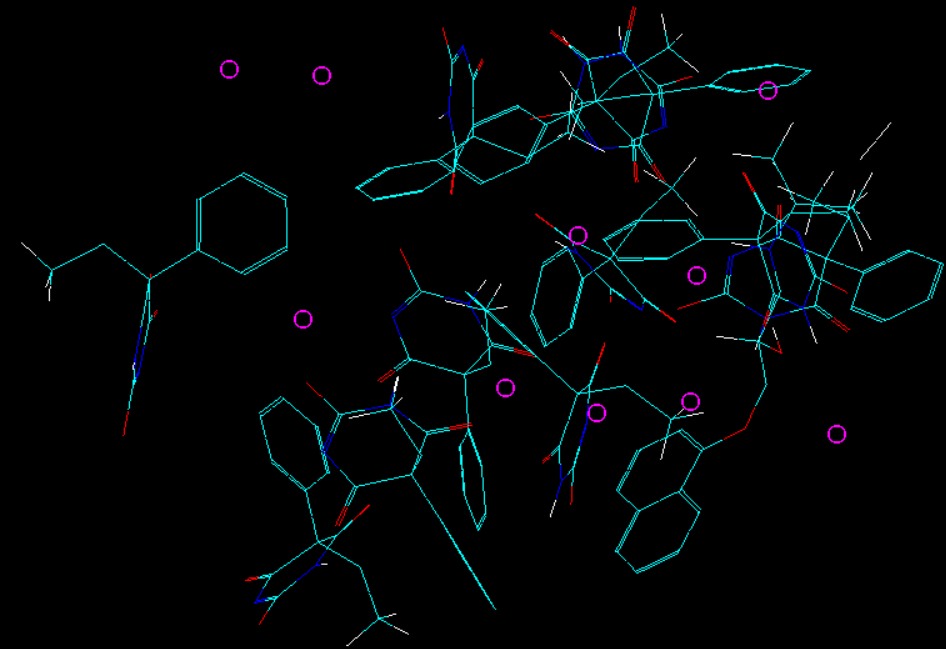Mixing two Pharmaceutical APIs

Our client, a start up Pharma organization has asked us to investigate, predict and prove whether the combination of two known pharmaceutical APIs would be feasible, stable and more active than the two separate APIs themselves. The two APIs that cannot be mentioned here [classified] function in a solution of a non toxic solvent plus three different known additives / stabilizers that allow for prolonged life of the commercial product. Our work was based on Computational Chemistry calculations under the highest accuracy.
We prepared the two APIs models in HyperChem and created their respective solutions [currently in the commercial products]. We set up simulations under the following set ups:
Method/ Approach: Density Functional Theory
Orbital Basis Set: 6-31G*
Grid: Standard Pople Grid
MO Initial Guess: Projected Huckel
Number of d orbitals: 6
Exchange Potential: HCTH98
Correlation Potential: HCTH98
We calculated the real Gibbs energies, optical properties, internal interactions for each solution. Then, we created new solutions based on the clients request. Client had asked for solutions in the 9:1 w/w point. Our work went beyond that request and we covered solutions in the range 5.9:1 – 10.9:1 w/w ratios. Each solution was left to equilibrate under Molecular Dynamics simulation at temperatures in the range 5 – 45 C to cover expected temperature range during use, storage and transportation in different regions around the world.

Stability of these mixtures was predicted on the basis of their total energies. Investigation of mixtures with increasing weight ratios show that they become more stable, at least in the 5.9-10.9 ratio that has been investigated. This finding of course does not mean that there is no limit in the mixing ratio that will lead to a decrease of stability at higher ratios. Activity of each mixture is confirmed by MD simulations at the given temperature range. MD simulations details for reasons of future use are given in Table 1. Relative stability [energies] are given in Table 2 for all mixtures generated and investigated [under MM+ field, DFT results kept classified]. Trend of Table 2 results is typical of very soluble compounds that retain their activity in mixtures.
In summary, the two APIs seem to exhibit high stability and individual activity for a range of relative weights around the 9g to 1g ratio requested by the client. The mixture itself appears to exhibit similar if not higher stability than the precursors themselves. Modification of other parameters could lead to different results and this should be a part of a longer investigation. A prediction of the lifetime of the mixture can be only expressed [at this time] qualitatively, based on the lifetimes of the two individual compounds. Mixture energies suggest at least the same [and longer] lifetimes than the original mixtures’ ones.
Table 1: MD simulations specifications
| Temperature [s] | 5 – 45 C |
| Time step | 0.001 ps |
| Total time | 10 ps |
| Boundary conditions | Periodic box [55x55x55] |
| Bath relaxation time | 0.002 ps |
| Constant temperature | Yes |
Table 2: Relative energies
| API1 g / API2 g | MM+ Energy [kcal mol-1] |
| 5.9 | -85.2 |
| 6.7 | -89 |
| 7.55 | -119 |
| 9.23 | -150 |
| 10.9 | -191 |
